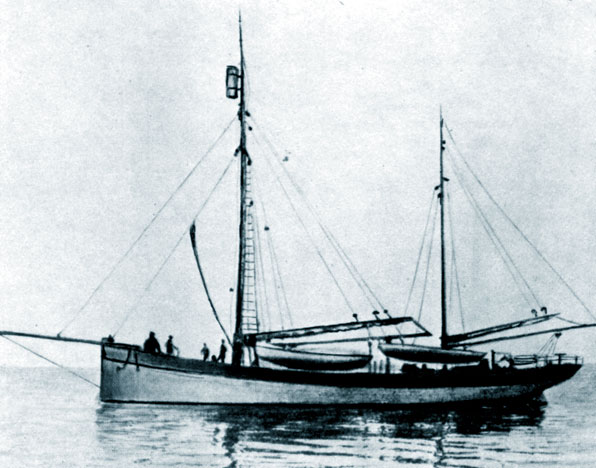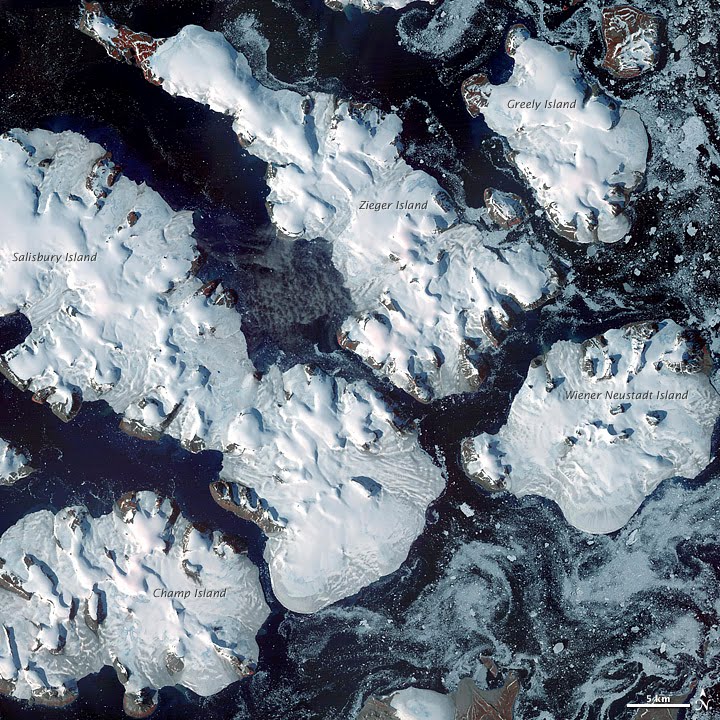|
Alexander Kuchin
Alexander Stepanovich Kuchin (russian: link=no, Александр Степанович Кучин; 28 September 1888 in Onega – 1913? in an unknown place in the Kara Sea) was a young Russian oceanographer and Arctic explorer. Background Hailing from a humble background, Alexander Kuchin became a seaman in a Norwegian ship already when he was seventeen. The young man loved the Norwegian language, which he mastered in one year. In 1907 Alexander Kuchin worked in Bergen, at a Norwegian Biological Station, becoming a student of oceanography expert Professor Bjorn Helland-Hansen. Meanwhile, his enthusiasm for the Norwegian language was such that he wrote a "Small Russian-Norwegian dictionary" ("Малый русско-норвежский словарь") in order to share his knowledge with his compatriots. In 1910–1911, Alexander Kuchin was the only foreigner on Amundsen's expedition to the South Pole on the ''Fram''. He made numerous observations in the Southern Atl ... [...More Info...] [...Related Items...] OR: [Wikipedia] [Google] [Baidu] |
Onega, Arkhangelsk Oblast
Onega (russian: Оне́га) is a town in the northwest of Arkhangelsk Oblast, Russia, situated at the mouth of the Onega River, a few kilometers from the shore of the Onega Bay of the White Sea. Population: History The Pomor village of Ust-Onega () was first mentioned in Novgorodian documents in the 14th century. In 1699, it was designated as one of the 4 ports in Russia whose exports to Britain were subject to the monopoly enjoyed by the Russia Company. It was chartered on August 19, 1780, after Pyotr Shuvalov had sold his rights to fell timber to English industrialists who built several sawmills there. Since 1784, Onega was the administrative center of Onezhsky Uyezd. Administrative and municipal status Within the framework of administrative divisions, Onega serves as the administrative center of Onezhsky District, even though it is not a part of it. As an administrative division, it is, together with three rural localities, incorporated separately as the town of ... [...More Info...] [...Related Items...] OR: [Wikipedia] [Google] [Baidu] |
Grønfjorden
Grønfjorden (English: Green Fjord or Green Harbour) is a 16 km long fjord, separated from Isfjorden to the north by Festningsodden in the west and Heerodden in the east. It lies within the western portion of Nordenskiöld Land. On its eastern shore is the mining community of Barentsburg, the second largest settlement (after Longyearbyen) on Spitsbergen. History The fjord was named ''Green Harbour'' by the English explorer (and later whaler) Jonas Poole in 1610. Grønfjorden is the Norwegian equivalent. The first whaleship (a Basque vessel) reached Grønfjorden in 1612; it continued to be used for whaling up until the 1650s. Grønfjorden was the site of the air attack in 1942 during the Operation Fritham. See also *History of Basque whaling The Basques were among the first people to catch whales commercially, as opposed to aboriginal whaling, and dominated the trade for five centuries, spreading to the far corners of the North Atlantic and even reaching the South Atlanti ... [...More Info...] [...Related Items...] OR: [Wikipedia] [Google] [Baidu] |
Salisbury Island (Russia)
Salisbury Island, (Russian: Остров Солсбери; ''Ostrov Solsberi'') is an island located in the central area of Franz Josef Land, Russia. Geography Salisbury Island is relatively large and long, having a surface of 960 km². Its highest point is 482 m and practically the entire surface of the island is glacierized. Salisbury Island is part of the Zichy Land subgroup of the Franz Josef Archipelago. It has very little open sea around it, being wedged between Luigi Island and Champ Island on its southwestern shores, Ziegler Island in the northeast and Wiener Neustadt Island in the east. The island was named by Frederick George Jackson during his 1894–1897 expedition. A possible source for the name is geology professor Rollin D. Salisbury (1858-1922), of the University of Chicago. Salisbury was second-in-command on the Peary relief expedition. It is also possible that Jackson named the island after Lord Salisbury. Adjacent Islands *Elisabeth Island (Остро ... [...More Info...] [...Related Items...] OR: [Wikipedia] [Google] [Baidu] |
Kolosovykh Islands
Kolosovykh Island (russian: остров Колосовых; Ostrov Kolosovykh) is an island, in the Kara Sea off the coast of Siberia. Geography Kolosovykh Island is located north of the Kolosovykh Peninsula, which is almost an island itself. The island's shore is deeply indented with two deep bays on both sides of a narrow 1.2 km wide isthmus that joins the northern from the southern part of the island. Ostrov Bol'shoy, a fairly large island with a diameter of 3 km, is located in the eastern bay. Kolosovykh has an average height of 13 m above sea level. and is separated from the mainland by a 2 km wide sound.GoogleEarth Geologically Kolosovykh Island is part of the Minina Skerries a coastal archipelago forming a complex structure that includes the Plavnikovyye Islands further south. The highest point of the island is 85 m high Gora Kolosovykh Hill. The sea surrounding Kolosovykh Island is covered with fast ice in the winter and the climate is severe, with bitter and long wint ... [...More Info...] [...Related Items...] OR: [Wikipedia] [Google] [Baidu] |
Mona Islands
The Mona Islands or Mohn Islands (russian: Острова Мона) is a group of a few scattered small islands covered with tundra vegetation. They are located in the Kara Sea, about 30 km north of the western coast of the Taymyr Peninsula in Siberia, Russia. Etymology The Mona Islands were named by Fridtjof Nansen after Henrik Mohn, a Norwegian meteorologist. Mohn worked out and published the meteorological observations of various polar expeditions, including those of Nansen in the "Fram" (1893-6). "Mona" is a genitive case in Russian, meaning "(islands) of Mon" and this name has stuck, especially since the Germans used ("Mona Inseln"), based on the Russian version of the name, during their campaigns in World War II. Since then "Mona Islands" has become popular and its use has been widespread in this manner for many decades and in many modern maps and atlases. Islands Kravkov Island Kravkov Island (Остров Кравкова) is one of the biggest islands, but it ... [...More Info...] [...Related Items...] OR: [Wikipedia] [Google] [Baidu] |
Nordenskiöld Archipelago
The Nordenskiöld Archipelago or Nordenskjold Archipelago (russian: Архипелаг Норденшельда, Arkhipelag Nordenshel'da) is a large and complex cluster of islands in the eastern region of the Kara Sea. Its eastern limit lies west of the Taymyr Peninsula. There are about 90 cold, windswept and desolate islands in this archipelago. These are mainly formed by igneous rocks and are covered with tundra vegetation. Except for two polar stations, one which was permanent in Russky Island between 1935 and 1999 and a temporary one in Tyrtov Island (Tyrtova) (1940-1975), there is no permanent human presence in any island of the archipelago. Geography The Nordenskiöld Archipelago stretches for almost from west to east and about from north to south in the Kara Sea, off the Siberian shores, where there are large coastal islands around Taymyr Island. The average elevation of the islands is relatively low. The highest point of the archipelago (107 m) is located in Chabak ... [...More Info...] [...Related Items...] OR: [Wikipedia] [Google] [Baidu] |
USSR
The Soviet Union,. officially the Union of Soviet Socialist Republics. (USSR),. was a transcontinental country that spanned much of Eurasia from 1922 to 1991. A flagship communist state, it was nominally a federal union of fifteen national republics; in practice, both its government and its economy were highly centralized until its final years. It was a one-party state governed by the Communist Party of the Soviet Union, with the city of Moscow serving as its capital as well as that of its largest and most populous republic: the Russian SFSR. Other major cities included Leningrad (Russian SFSR), Kiev ( Ukrainian SSR), Minsk ( Byelorussian SSR), Tashkent (Uzbek SSR), Alma-Ata (Kazakh SSR), and Novosibirsk (Russian SFSR). It was the largest country in the world, covering over and spanning eleven time zones. The country's roots lay in the October Revolution of 1917, when the Bolsheviks, under the leadership of Vladimir Lenin, overthrew the Russian Provisional Gove ... [...More Info...] [...Related Items...] OR: [Wikipedia] [Google] [Baidu] |
Arctic And Antarctic Research Institute
, image = , image_upright = , alt = , caption = , latin_name = , motto = , founder = , established = , mission = , focus = Research into the Arctic and Antarctica , president = , ceo = , chairman = , head_label = , head = , faculty = , adjunct_faculty = , staff = , key_people = , budget = , endowment = , debt = , num_members = , subsidiaries = , owner = Federal Service of Russia for Hydrometeorology and Monitoring of the Environment , non-profit_slogan = , former_name = , location = , city = Saint Petersburg , state = , province = , country = Russia , coor = , address = , website www.aari.ru/main. ... [...More Info...] [...Related Items...] OR: [Wikipedia] [Google] [Baidu] |
Otto Sverdrup
Otto Neumann Knoph Sverdrup (31 October 1854, in Bindal, Helgeland – 26 November 1930) was a Norwegian sailor and Arctic explorer. Early and personal life He was born in Bindal as a son of farmer Ulrik Frederik Suhm Sverdrup (1833–1914) and his wife Petra Neumann Knoph (1831–1885). He was a great-grandnephew of Georg Sverdrup and Jacob Liv Borch Sverdrup, first cousin twice removed of Harald Ulrik Sverdrup (politician), Harald Ulrik and Johan Sverdrup, second cousin once removed of Jakob Sverdrup (politician), Jakob, Georg Sverdrup (theologian), Georg and Edvard Sverdrup, third cousin of Georg Johan Sverdrup, Georg Johan, Jakob Sverdrup (philologist), Jakob, Mimi Sverdrup Lunden, Mimi, Leif J. Sverdrup, Leif and Harald Sverdrup (oceanographer), Harald Ulrik Sverdrup. He was a brother-in-law of Johan Vaaler, and Otto himself married his own first cousin, Gretha Andrea Engelschiøn (1866–1937), in October 1891 in Oslo, Kristiania. Their daughter Audhild Sverdrup (1893– ... [...More Info...] [...Related Items...] OR: [Wikipedia] [Google] [Baidu] |
Georgy Brusilov
Georgy Lvovich Brusilov (russian: Гео́ргий Льво́вич Бруси́лов; May 19, 1884 – disappeared in 1914) was a Russian naval officer of the Imperial Russian Navy and an Arctic explorer. His father, Lev Brusilov, was also a naval officer. In 1912 Brusilov led a maritime expedition which was intended to explore and map a route from the Atlantic Ocean to the Pacific via a northeast passage, also called the Northern Sea Route. His expedition disappeared almost without a trace, and despite searches its ultimate fate was unknown until 2010. Arctic expeditions Arctic Ocean Hydrographic Expedition During 1910–1911, Georgy Brusilov participated in the Arctic Ocean Hydrographic Expedition of the Russian Hydrographic Service on icebreakers ''Taymyr'''' and ''Vaygach'''', visiting the Chukchi Sea and East Siberian Sea. Brusilov Expedition In 1912, Brusilov commanded the Brusilov Expedition using the brig ''St. Anna'', which was intended to travel from the Atlant ... [...More Info...] [...Related Items...] OR: [Wikipedia] [Google] [Baidu] |
Hercules Schooner Rusanov
Hercules (, ) is the Roman equivalent of the Greek divine hero Heracles, son of Jupiter and the mortal Alcmena. In classical mythology, Hercules is famous for his strength and for his numerous far-ranging adventures. The Romans adapted the Greek hero's iconography and myths for their literature and art under the name ''Hercules''. In later Western art and literature and in popular culture, ''Hercules'' is more commonly used than ''Heracles'' as the name of the hero. Hercules is a multifaceted figure with contradictory characteristics, which enabled later artists and writers to pick and choose how to represent him. This article provides an introduction to representations of Hercules in the later tradition. Mythology Birth and early life In Roman mythology, although Hercules was seen as the champion of the weak and a great protector, his personal problems started at birth. Juno sent two witches to prevent the birth, but they were tricked by one of Alcmene's servants and sent t ... [...More Info...] [...Related Items...] OR: [Wikipedia] [Google] [Baidu] |



